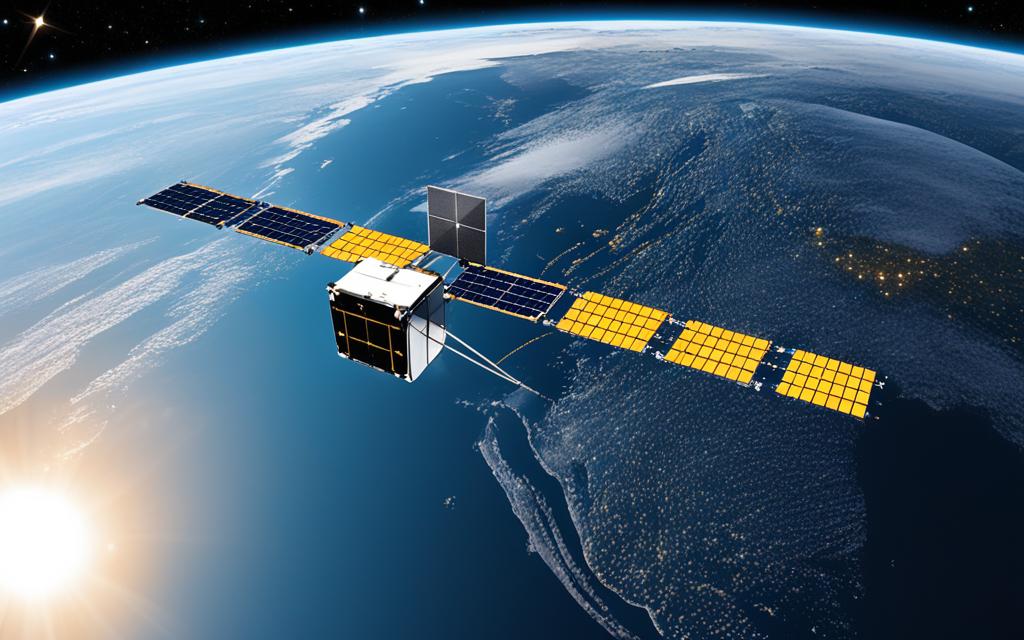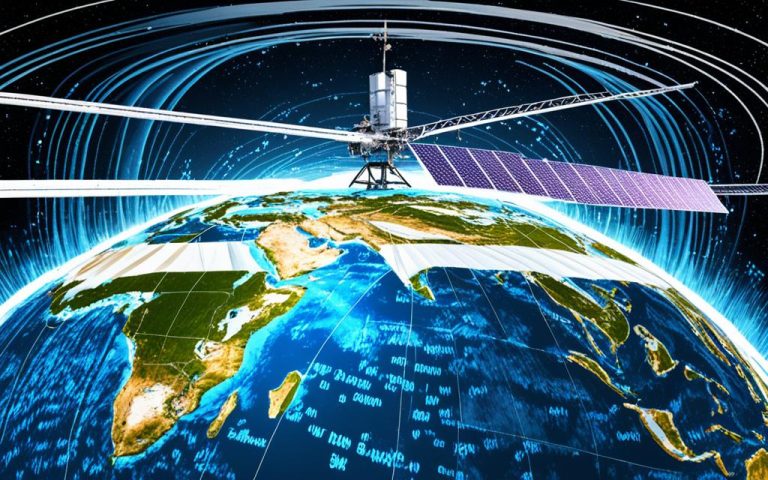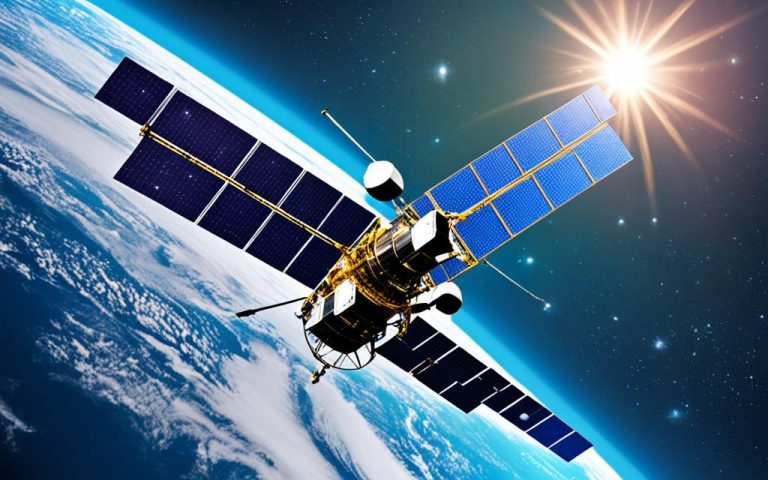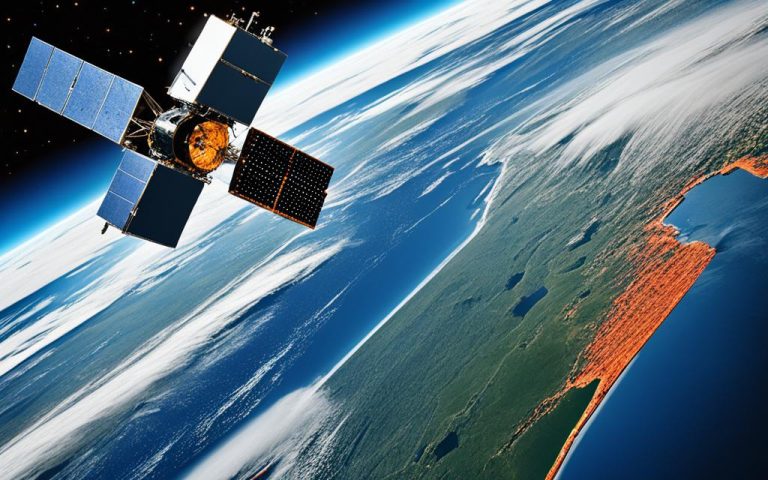CubeSats and NanoSats have revolutionized the field of space exploration by enabling low-cost missions and democratizing access to space. These small satellite technologies have simplified satellite-building projects and significantly reduced build time.
Since their first launch in 2003, CubeSats have become a standard in the industry, with nearly 2,000 of them making it to space. Organizations like NASA and multibillion-dollar companies have embraced this technology, propelling the growth of CubeSats and NanoSats.
The invention of CubeSats started as a teaching tool by professors Bob Twiggs and Jordi Puig-Suari. The concept was met with skepticism initially, but their success and potential for low-cost missions gradually gained industry acceptance.
CubeSats are now used for a wide range of applications, including Earth observation, weather sensing, communications, and interplanetary missions. They have also facilitated the development of new space businesses, creating opportunities for student-led projects and driving innovation in the industry.
As the industry continues to evolve, CubeSats and NanoSats will play a crucial role in shaping the future of space exploration.
The Invention of CubeSats: A Teaching Tool Becomes an Industry Standard
The origin of CubeSats traces back to the ingenuity of Professor Bob Twiggs, who aimed to simplify satellite-building projects for his students. Frustrated with the complex and time-consuming nature of traditional satellites, Twiggs, along with his co-inventor Jordi Puig-Suari, conceived the idea of creating a cube-shaped satellite. This novel approach involved equipping the satellite with solar cells on all sides to harness power.
Twiggs and Puig-Suari developed the standard 10 cm x 10 cm x 10 cm cube form factor, which laid the foundation for CubeSats as we know them today. Initially employed as a teaching tool, CubeSats encountered skepticism within the space industry. However, their success and potential for low-cost missions quickly gained recognition, sparking the widespread adoption of CubeSats as an industry standard.
Driven by the desire to provide hands-on experience and practical skills to students, the invention of CubeSats revolutionized space education. By simplifying satellite design and manufacturing processes, CubeSats became an invaluable teaching tool for universities and educational institutions worldwide. Through experimenting with CubeSats, students gained invaluable knowledge and expertise in space technology, paving the way for future innovators.
“The invention of CubeSats democratized access to space education, creating a level playing field for aspiring engineers and scientists.” – Professor Bob Twiggs
The transformation of CubeSats from a teaching tool to an industry standard can be attributed to their numerous advantages. CubeSats offer a cost-effective solution for space missions, reducing the financial barriers of entry for individuals, organizations, and even emerging space companies. The simplicity and efficiency of CubeSat design and construction, coupled with the strategic use of off-the-shelf components, revolutionized satellite development and disrupted the traditional space industry hierarchy.
| Benefits of CubeSats | Industry Impact |
|---|---|
| Low-cost development | Promoted innovation and entrepreneurship in the space sector |
| Shorter development time | Accelerated the pace of space exploration and technology advancement |
| Opportunity for student involvement | Cultivated the next generation of space professionals |
| Standardized form factor | Simplified satellite integration and launch processes |
As CubeSats gained recognition and acceptance within the space industry, their applications expanded beyond educational projects. The versatility of CubeSats enabled their deployment for Earth observation, weather sensing, communication systems, and even interplanetary missions. Additionally, their compact size and scalability provided opportunities for constellation deployments, enabling comprehensive global coverage and data collection.
Incorporating CubeSats into Space Curriculum
Recognizing the immense value of CubeSats in education, universities around the world have integrated CubeSat projects into their space-related courses and programs. This integration allows students to gain practical experience in designing, building, and operating satellites, fostering a deeper understanding of space technologies. Through these initiatives, students have the opportunity to work collaboratively on real-world satellite missions, preparing them for future careers in the space industry.
The transformative power of CubeSat technology continues to shape the landscape of space exploration, propelling the growth of space startups and revolutionizing the way we approach space missions. From its humble beginnings as a teaching tool, CubeSats have now become an integral part of the space industry, offering boundless opportunities for innovation and discovery.
Overcoming Challenges: From Ridicule to Industry Acceptance
CubeSats faced numerous challenges during their early days in the space industry. Many people dismissed the concept as impractical, subjecting it to ridicule and skepticism. However, CubeSats had a unique advantage – they were primarily used for educational purposes and weren’t expected to carry out complex missions.
This advantage allowed CubeSats to benefit from the support of commercial vendors, who willingly donated parts to student-led projects. While initially facing criticism, CubeSats began to gain industry acceptance over time.
“CubeSats started as educational tools, but we quickly realized their potential for more than just learning. They offered a cost-effective way to send satellites into space and opened up new possibilities for exploration.”
With the support of organizations like NASA and their commitment to fostering innovation, the perception of CubeSats shifted. The successful launch of the GeneSat-1 in 2006 further solidified industry acceptance and highlighted the potential of these small satellites.
Add to that the development of ride-share services, which made it easier to launch CubeSats alongside larger satellites, and the miniaturization of electronic components, CubeSats experienced exponential growth in various applications.
The industry acceptance of CubeSats marked a significant turning point, paving the way for a new era in space exploration characterized by accessibility and affordability.
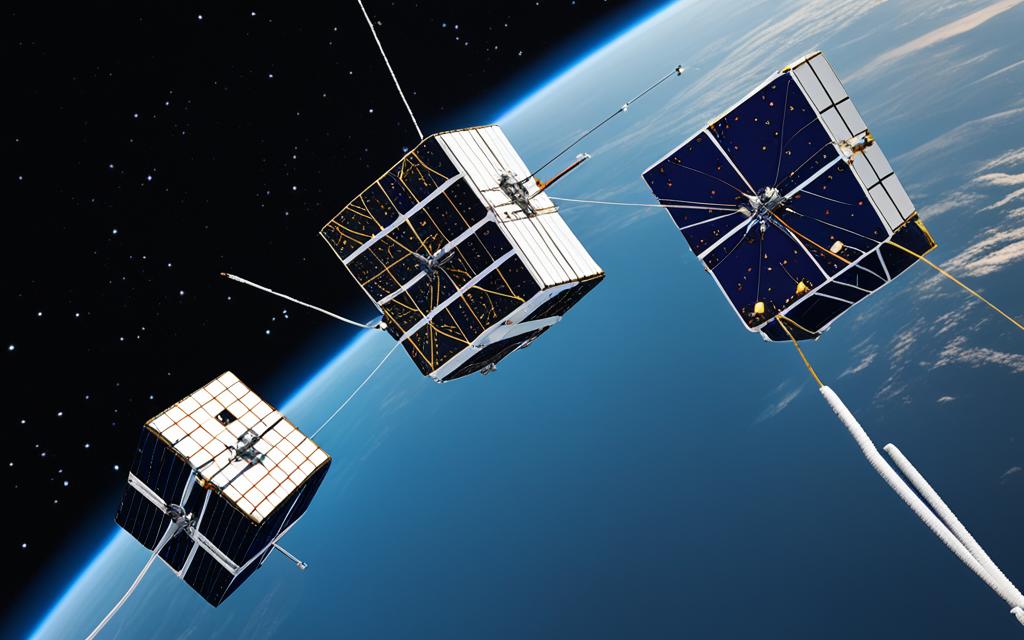
The Role of Industry Acceptance
The acceptance of CubeSats in the space industry has had far-reaching implications. It has enabled researchers, scientists, and students to conduct experiments and gather data on a smaller scale, contributing to advancements in a wide range of fields, including Earth observation, weather sensing, communications, and even interplanetary missions.
Furthermore, the industry acceptance of CubeSats has fostered the growth of new space businesses, with companies like Planet Labs and Terran Orbital harnessing the potential of CubeSat technology. These organizations have expanded the boundaries of space exploration and created opportunities for innovative projects and collaborations.
As the industry continues to evolve, so do the challenges associated with CubeSats. However, the benefits and potential of these small satellites far outweigh the obstacles, driving continuous innovation and propelling the industry forward.
Increasing Applications and Growing Industry
CubeSats, the small satellite technology, have found diverse applications in various fields, contributing to the growth of this rapidly expanding industry. These miniaturized satellites are being utilized for a wide range of purposes, including:
- Earth observation: CubeSats equipped with high-resolution cameras and sensors capture valuable data for monitoring environmental changes, measuring deforestation rates, and aiding disaster response efforts.
- Weather sensing: CubeSats are deployed to collect meteorological data, enabling accurate weather forecasting and climate research.
- Communications: CubeSats serve as communication relays, helping bridge connectivity gaps in remote areas and facilitating data transmission for scientific missions.
- Interplanetary missions: CubeSats play a vital role in exploring the vast expanse of space, assisting larger spacecraft in conducting detailed surveys of celestial bodies.
The applications of CubeSats continue to expand, paving the way for innovative solutions to complex challenges. This growing industry has attracted companies like Planet Labs and Terran Orbital that have successfully built their businesses around CubeSat technology.
The CubeSat industry itself is experiencing significant growth, with dozens of new companies entering the market every year. While the professionalization of the CubeSat standard has presented some challenges in terms of launching these satellites, such as securing launch opportunities and complying with regulations, the benefits and potential offered by CubeSats continue to drive innovation and investment within the industry.
Quote:
“The versatility and cost-effectiveness of CubeSats have opened up a multitude of applications in space exploration, leading to a growing industry that shows no signs of slowing down.” – Mark Johnson, CEO of Orbital Dynamics
Conclusion
CubeSats and NanoSats have revolutionized the field of space exploration by enabling low-cost missions and democratizing access to space. These small satellites, which were initially developed as a teaching tool, have now become an industry standard. With thousands of CubeSats launched into space, their impact on the space industry cannot be overstated.
The applications of CubeSats and NanoSats are vast and wide-ranging. From Earth observation and weather sensing to interplanetary missions and communications, these miniaturized satellites have opened up new possibilities for space exploration and research. Companies like Planet Labs and Terran Orbital have leveraged CubeSat technology to build successful businesses and drive innovation in the industry.
Moreover, CubeSats and NanoSats have provided invaluable opportunities for student-led projects and educational endeavors. By simplifying satellite-building projects and reducing costs, these small satellites have allowed students and researchers to gain practical experience in space engineering and data collection.
As the industry continues to evolve, CubeSats and NanoSats will continue to play a crucial role in shaping the future of space exploration. Their low-cost nature and accessibility make them ideal for a wide range of missions, from scientific research to commercial applications. The success and potential of CubeSats and NanoSats inspire us to explore new frontiers and push the boundaries of what is possible in space.
FAQ
What is CubeSat technology?
CubeSat technology refers to small satellite technology that has revolutionized the field of space exploration. CubeSats are miniaturized satellites that are built in a standardized cube form factor, typically measuring 10 cm x 10 cm x 10 cm. These small satellites enable low-cost missions and have democratized access to space.
How many CubeSats have been launched?
Since the first launch in 2003, nearly 2,000 CubeSats have made it to space. The industry continues to grow with the emergence of multibillion-dollar companies and space agencies embracing this new technology.
What is the origin of CubeSats?
CubeSats originated from the idea of simplifying satellite-building projects. Professor Bob Twiggs and Jordi Puig-Suari came up with the concept of making the satellite a cube and using solar cells on all sides for power. They developed the 10 cm x 10 cm x 10 cm cube form factor, which is now known as the CubeSat standard.
How were CubeSats initially received by the space industry?
Initially, CubeSats were met with skepticism and considered impractical by many in the space industry. However, their success as a teaching tool and their potential for low-cost missions led to their widespread adoption as an industry standard.
What challenges did CubeSats face in their early days?
CubeSats faced challenges such as being ridiculed and deemed impractical. However, they benefited from being primarily used for education and the support of commercial vendors who donated parts to student-led projects. Over time, CubeSats gained industry acceptance and proved their capabilities with successful launches.
What are the applications of CubeSats?
CubeSats are used for various applications including Earth observation, weather sensing, communications, and even interplanetary missions. They have also facilitated the development of new space businesses, with companies like Planet Labs and Terran Orbital building their success on CubeSat technology.
Is the CubeSat industry growing?
Yes, the CubeSat industry is growing rapidly with dozens of new CubeSat companies being founded every year. The professionalization of the CubeSat standard has led to some challenges in getting CubeSats launched, but the benefits and potential of these small satellites continue to drive innovation in the industry.

